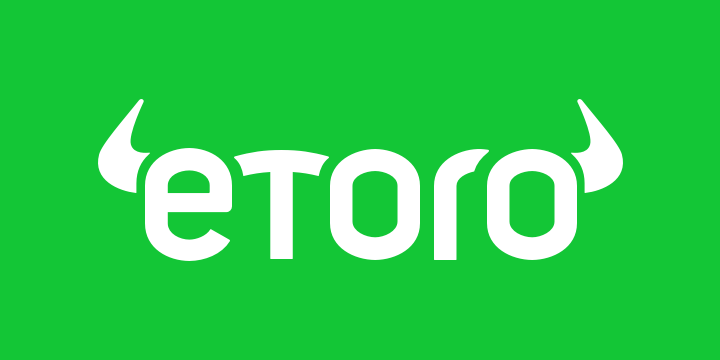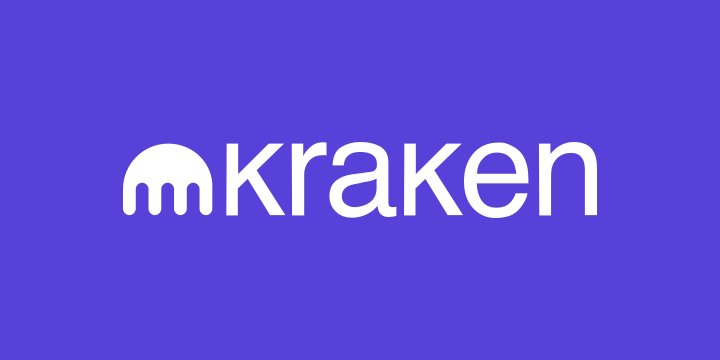How to Trade Ethereum in 2024 - Complete Guide
...
In the post-pandemic world, cryptocurrencies and blockchains are becoming increasingly important, including Ethereum. This has driven up the prices of many coins, including ETH tokens. Due to the current increase in prices, many day traders, along with people looking for a secondary income, are now considering cryptocurrency trading so that they can buy low and sell high.
We have created this exhaustive and detailed guide that will take you through the journey of Ethereum trading. You will be able to learn how to predict ETH price fluctuations and make better trading decisions through fundamental and technical analysis.
What Is Ethereum Trading and How Is It Different From a Standard Purchase?
The first thing you need to learn about Ethereum investment is that there are two different strategies. The first one involves owning and holding Ethereum in a crypto wallet so you can sell it after months or even years to realise big profits.
The second strategy is day trading, where you bet on the price of ETH through derivatives like contracts for difference (CFDs). Brokers offer these, and if you trade with them, you don’t actually own the coins but instead a contract that speculates on the price.
While you can find a wide variety of ETH derivatives, three are commonly used for trading Ethereum on brokerage and exchange websites.
- CFDs – Short for Contract for Difference, a CFD is a derivative product that represents the value of an underlying asset, which in this case is Ethereum. Instead of buying Ethereum, you can predict its price through CFDs and pocket the difference. This enables you to trade in a more quick and convenient manner.
- Futures – This is a derivative that requires the trader to close their order on a predetermined date. If their prediction is correct, they make a profit. Otherwise, they will suffer losses.
- Options – This derivative is just like a futures contract, except traders aren’t obliged to close their position on settlement day. If the trade goes their way, they can choose to close their order; otherwise, they can cut their losses by simply paying a fee for the contract itself. These can be traded on derivatives exchanges like Deribit.
The best feature of trading derivatives is that you can buy and sell them right away without having to jump through any hoops. Compared to buying ETH coins and holding them, this is a much more convenient and quicker method to make money.
When you are choosing a broker, it is highly recommended that you go for a service that’s not only registered but complies with national regulations. Trading on regulated brokerage platforms minimises your risk and ensures that you won’t have to face any scams or frauds. The type of derivatives and associated features depends on the country the broker is registered in, along with your own country of residence.
Many traders who are just getting into the trading business like to copy high-profile traders’ trades, which is a feature available on many social trading platforms. This is a double-edged sword, as, on the one hand, you are more likely to be successful, but on the other, you don’t have the trading volume and safety cushion that’s available to large-volume traders.
That’s why it is advised that you should copy trades with caution, ensuring that it is suitable for your situation, considering your initial capital, fees, and other factors.
Where Can I Trade Ethereum?
We evaluated multiple popular trading platforms, taking a number of factors into account, and shortlisted some of the best brokers and exchange platforms for ETH trading.
Online Brokers
Brokerage websites allow you to quickly trade Ethereum. When you are using a brokerage service, keep in mind that you don’t own the cryptocurrency. Instead, you buy a contract that entitles you to the capital you’ve put in plus any profits or losses you make when the position is closed. Almost every platform offers cryptocurrency derivatives such as futures, options, and CFDs.
Benefits of Using a Broker to Trade Ethereum
- You don’t have to purchase Ethereum or manage a crypto wallet
- You don’t have to be concerned about the security of your tokens
- You can make profits in the short term as compared to holding
- You can increase profitability through leveraged trading
- Ability to start cryptocurrency investment with as low as $100
- Broker services are registered and adhere to KYC and AML regulations
- Broker websites are more transparent when it comes to transactional expenses, charges, commissions, and fees
- Broker platforms have seasoned traders and a wide variety of analysis tools
Derivative Exchanges
When cryptocurrency exchanges first started out, most of them only facilitated buying and selling of cryptocurrencies, including Ethereum. However, that has changed recently as more and more exchanges are now offering crypto derivatives to their users for day trading. If you’ve made an account on a leading exchange such as Binance and Okex, you probably don’t need to use a brokerage service. These exchanges also allow you to engage in leveraged trading to maximise your profitability during the ETH bull run. Having said that, you need to manage your risk when opening leveraged positions.
Benefits of Using an Exchange to Trade Ethereum
- Cryptocurrency exchanges are more versatile and allow you to buy and sell niche tokens
- You get the ability to withdraw your Ethereum tokens whenever you want
- Exchanges usually offer a far better range of digital currencies and assets for trading
- You get more options to withdraw and deposit your funds in the exchange’s account
- Exchanges can be quite user-friendly as compared to brokerage websites which can be intimidating for newbies
- You have the option to open highly leveraged trades (manage your risk)
- You get the services of an exchange and a broker consolidated in one
Our Step-by-Step Guide on Ethereum Trading
For your clear understanding and guidance, we have come up with a detailed guide that takes you through the process of trading Ethereum on exchanges and brokerage websites.
1. Combine Fundamental and Technical Analysis
When it comes to crypto trading, you need to familiarise yourself with two major types of analysis – fundamental and technical. If you can gather and process the right information, your odds of opening profitable trades become higher.
The first type of analysis involves basic information and is more qualitative. It generally includes:
- News – As Ethereum is the second most popular cryptocurrency in the world, there are a number of factors that can drive a price surge as well as a downtrend. As a trader, you need to be aware of everything related to the coin, including recent news, developments, updates, and the opinions of industry leaders to make profitable trades.
- Supply and Demand – At the time of writing, more than 115 million ETH tokens are in circulation. A substantial increase or decrease in the available quantity can also result in price fluctuations.
- Follow the General Rules of Economics – If Ethereum’s demand increases, the price will increase, but if it’s the supply that sees gains, the price will fall.
Technical analysis is all about crunching numbers and finding patterns through statistics and facts. This allows you to make highly evidence-based trading decisions with a higher probability of profit earning. There are a number of technical markers that you can rely on for your trading, but some of the most popular ones include the following:
- Moving Averages – When you use the previous prices of Ethereum at different intervals to calculate an average, it’s called a moving average. Depending on the performance of the coin, it may increase or decrease as days go by. Moving averages allow traders to evaluate how the ETH price is moving and how it’ll potentially behave in the coming days.
- Relative Strength Index – This particular indicator gives you an idea about what the market is thinking through oversold and overbought signals. For instance, if the ETH price is increasing with an overbought indication, this means that price might fall in the coming days. Similarly, an oversold indication coupled with a decline in price signifies a potential price rise.
- Moving Average Convergence Divergence – This indicator calculates the difference between a 12- and 26-period exponential moving average, or EMA. It is called Moving Average Convergence Divergence (MACD), and it indicates if and when traders are expected to buy Ethereum after a period of selling.
If you want to become a seasoned trader, you can use a wide range of other technical analysis tools and indicators such as Fibonacci levels, stochastic RSI, and various candlestick chart patterns. To learn more about our ETH forecasts, visit our Ethereum price prediction guide here.
2. Choosing a Trading Strategy
There are no arguments about the fact that every trader is looking to earn profits. That being said, depending on your situation and circumstances, you have to choose the right strategy to maximise your odds.
- HODL: ‘Hodl’ is an inside joke of the cryptocurrency sphere, which caught on when a frustrated Bitcoin trader incorrectly spelt ‘hold’. The strategy involves buying and holding ETH coins for as long as possible to make substantial profits over the course of months or even years.
- Day Trading: The unpredictability of the crypto market also extends to Ethereum, which produces a number of opportunities for traders to profit from. The highs and lows can be exploited by traders to open and close positions on a day-to-day basis to maximise their financial gains.
- Swing Trading: Just like day trading, swing trading also takes advantage of the market volatility but it involves longer duration positions which can be anywhere between a few days to weeks. You must rely on technical analysis for swing trading to identify when the market will ‘swing’ between upward and downward trends.
- Hedging: More than trading, this is a risk minimisation strategy deployed by many seasoned traders. It involves securing your original trade by opening an opposing position so you can still realise some profit if your first trade doesn’t go to plan.
- Scalping: Once again, this strategy is just like day trading, except the trades don’t last more than a few hours or minutes. The gains are comparatively lower, but you also have the opportunity to close more trades.
When it comes to trading strategies, there is a wide range of techniques you can employ including copy-trading and news-based trading. Each strategy has its own pros and cons, and in the end, it’s you, the trader, who has to make the final call.
3. Select an Appropriate Platform for your Needs
If you want to be profitable, you need to ensure that you are on the right platform for trading Ethereum. The first decision that you need to make is whether you should go for a dedicated broker or an exchange.
While there are similarities in terms of user experience, broker platforms have a more trading-oriented interface and allow larger trading volumes. On the other hand, exchanges offer a better variety of cryptocurrencies, and you can also take higher risks through leveraged trading. Whichever platform you pick, it is a smart idea to go for a registered and regulated one.
Platforms that aren’t registered or don’t adhere to KYC and AML regulations can be shut down without any prior notice. They can also turn out to be frauds or scams.
4. Setting Up Your Account
After you have validated your identity, you can set aside the base deposit in either digital currency or fiat cash, subject to the trading service you’ve picked. Go to your wallet and pick the deposit choice from where you can choose any of the payment methods.
Many exchanges and brokerages will require you to upload a copy of your government-issued ID, proof of address, and a selfie in order to verify your identity fully.
5. Prepare Your Trading Position
After you have set up your account and deposited your seed capital, you can start trading by going to the ‘Trade’ section. You will see different types of interfaces on different websites, but there will be a few common components such as the order book, buy and sell, etc.
Short or Long Positions?
If you believe that the price of Ethereum is going to increase, you buy ETH coins low and attempt to sell them at a peak to realise your profits. This is called a long position. However, if you expect the ETH price to go down, you can bet on this outcome with a short position. Shorting can be quite risky, as you will lose out if the price of Ethereum increases sharply.
Limit or Market Order
A trade or order that uses Ethereum’s market value is called a market order. As you don’t set the price, you can only see buy and sell options in the market order section. However, if you want to get a better price, you can start a limit order which asks for the price at which you want to initiate your trade as well as the number of ETH coins. The major difference is that market orders can be executed right away, but limit orders may take time until the market reaches that particular price point.
Trade Position Amount and Leverage
The total capital you invest in a trade is called the trade position sum. You can maximise this by opening a leveraged position that allows you to make the most of a bullish trend. On trading platforms, leveraged trading is expressed in terms of proportions. For instance, 15:1 means 15x leverage, and if you have invested $1,000, your profits or losses will be calculated as if you have invested $15,000. You should always manage your risk carefully when using leverage.
Risk Management: How to Decide the Right Stop-Loss and Take Profit values for Your Ethereum Trade
When the market doesn’t respond according to your expectations, you can use the stop-loss feature to minimise your losses. To initiate a stop-loss order, you need to provide two key values: the stop price, at which point the order is activated, and the limit price, which is the price at which you actually close your position.
Your limit price should always be below your stop price to account for the fast-moving Ethereum market. Relying on technical analysis, you can place a stop-loss order under a support threshold when you think that Ethereum’s price is about to increase.
A take profit order does the same thing: it automates your trade to close when a certain profit threshold has been reached. This is convenient for traders who can’t check on the market constantly.
Review and Execute Your Ethereum Order
Before you start your order, ensure that you have entered all the values correctly and have selected all the right options. Once you’ve verified every aspect of your order, click on the ‘sell’ or ‘buy’ option.
Close Your Trade for Profits or Limit Your Losses
If you have conducted thorough technical and fundamental analysis, you are likely to make a profit. You can either close your position on your own or use the take-profit feature, which closes the order on your behalf when a certain price is reached. Using the right combination of take-profit and stop-loss orders can help you minimise your trading risk.


